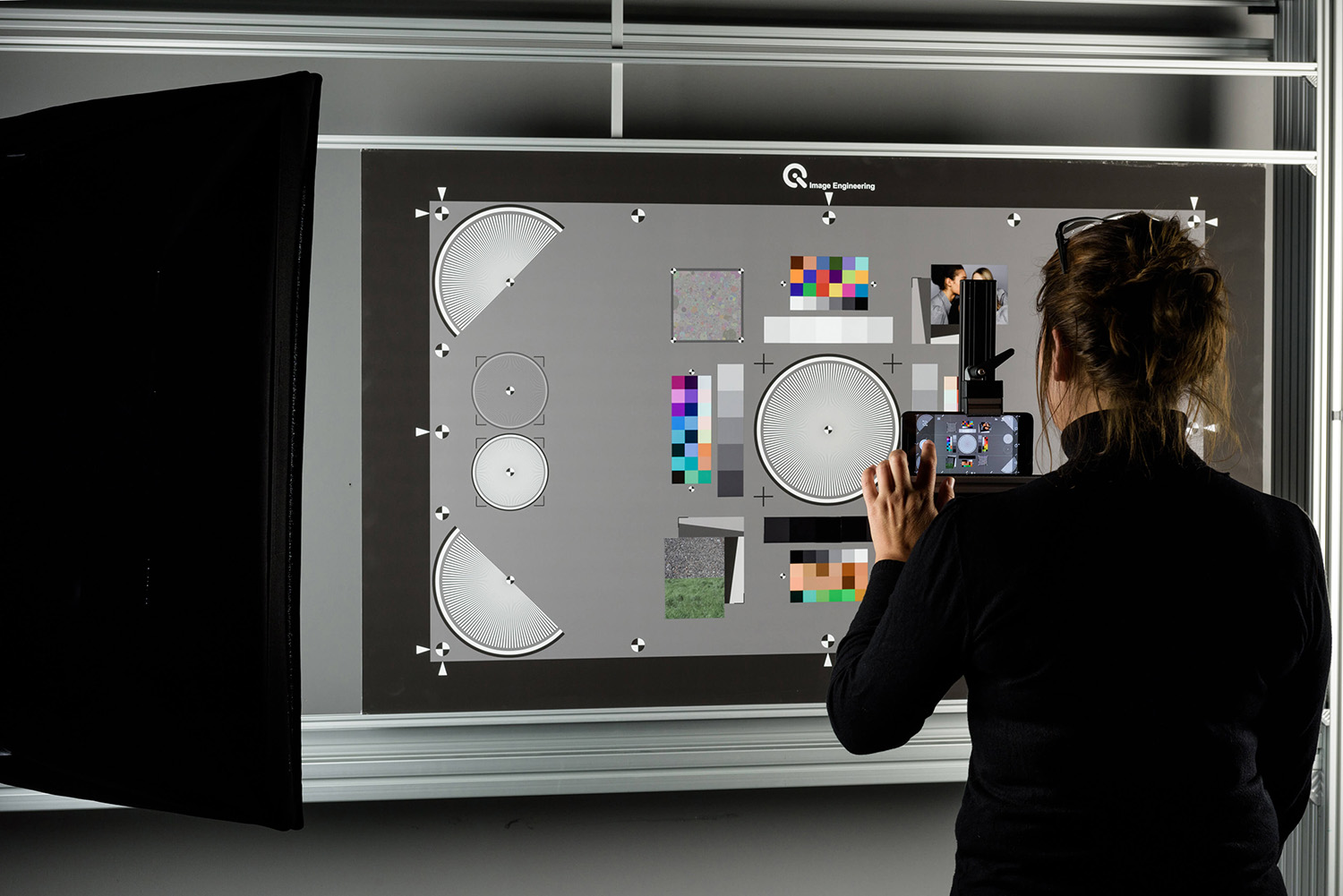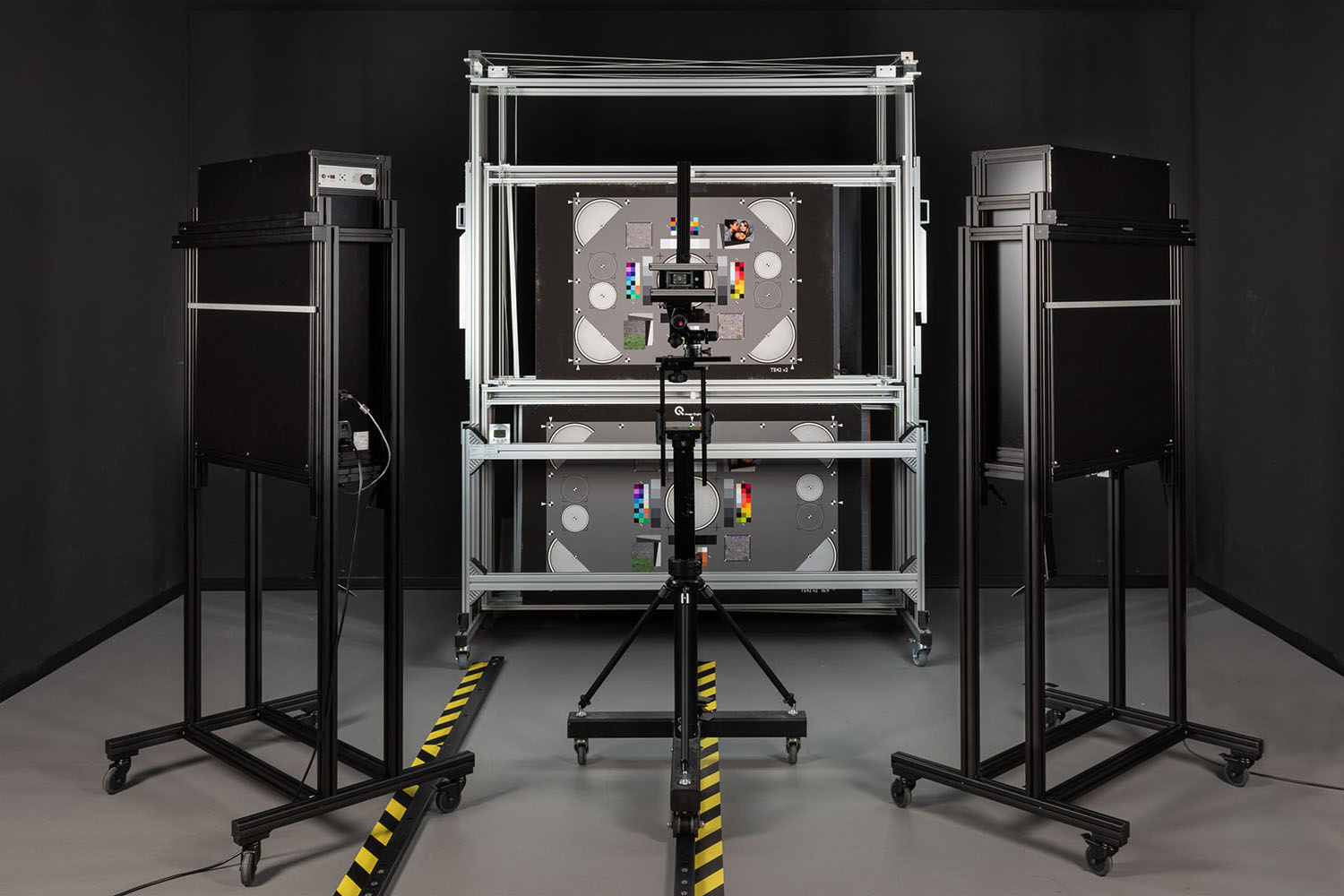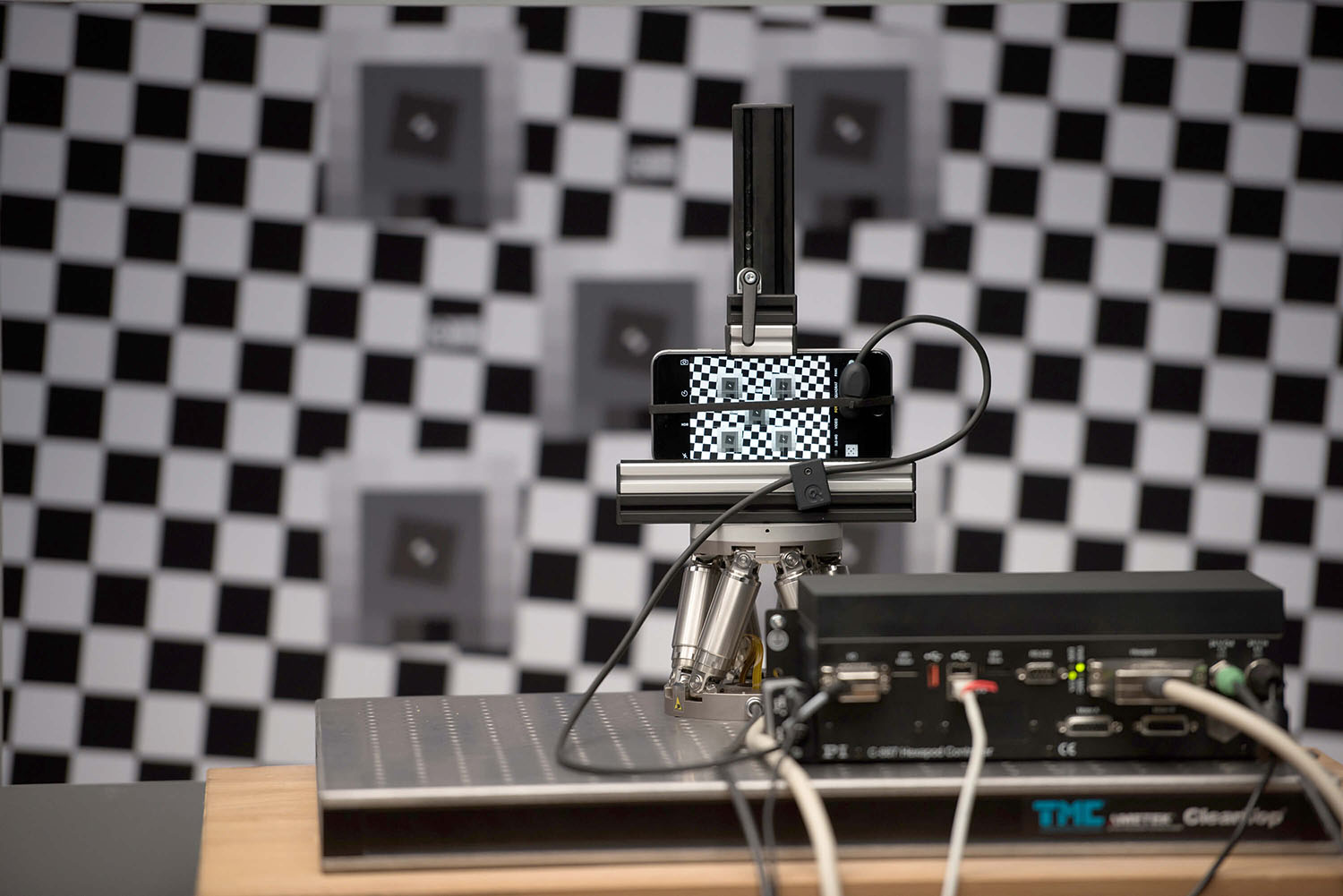The mission of the Image Engineering test lab has always been to provide our customers with transparent and objective results when evaluating their camera systems. Similarly, the goal of the VCX organization is to provide an objective "score" for mobile phone cameras so that consumers can make a more informed decision when purchasing a mobile phone.
As a founding member, we developed the test procedure that establishes the various image quality thresholds that a camera must meet to obtain a score. The higher the camera's performance in these areas, the higher the final score of the camera.
To ensure full transparency, it is crucial for the test labs performing the camera evaluations to follow the same guidelines. The VCX-Forum provides a white paper (request to download from the VCX website) that outlines the test procedures.
After establishing the test procedure, our test lab became the first of only a few fully trusted VCX test labs worldwide. Being a trusted VCX lab allows us to test mobile phones using the VCX test and then contribute our evaluations to the overall score published on vcx-forum.org. As a trusted VCX test lab, we also receive requests from various groups who would like to test mobile phones using the VCX method.

The VCX test
When performing a VCX test, we evaluate the main camera's performance in five different image quality measurement conditions. We also test the video performance under the specified lighting conditions. The conditions are as follows:
- Bright light – measured with a brightness of 2000 lux (D55) and represents daylight.
- Mid-light – measured at 250 lux (neutral LED) and represents standard indoor lighting without direct sunlight.
- Low-light – measured at 10 lux (warm LED). Low-light is the most challenging situation for a camera. As a result, VCX also tests low-light performance by capturing images with decreasing illumination to gauge the lowest light level a camera can still adequately perform.
- Flash – evaluated in a low-light scene with 10 lux.
- Zoom – evaluated with 4x zoom at each light condition (bright, mid, low). For devices with optical zoom, we first use the optical zoom and add digital zoom if needed to achieve a 4x zoom.
For each condition, VCX assesses a variety of image quality factors for their overall performance. Factors include resolution, texture loss, sharpening, color, visual noise, dynamic range, shading, distortion.
Each factor is measured using the TE42-LL multipurpose test chart. We illuminate the chart with the LED-powered iQ-Flatlights. Using iQ-LED technology gives us the ability to generate custom spectra and thus create the various light conditions required by VCX more accurately.
In addition, the selfie camera is also evaluated under bright, mid, and low-light conditions. The selfie evaluation is combined with the main camera evaluation to create the final assessment and score of the camera.

Timing and motion control measurements
To evaluate the VCX timing measurements, we use LED-Panels in combination with the iQ-AF Box for chart illumination. The LED-Panels can also be integrated into the TE42-LL chart to create the TE42-LL-T (timing) chart. For motion control or handshake performance, we use STEVE, which gives us the ability to simulate the motion of human hand shaking while holding a camera.
All of the charts and equipment that we use in our lab are also available for purchase for any lab wishing to build a VCX test lab for themselves. Please see our VCX solution pages for details.

Calculating the VCX score
The VCX white paper explains the scoring system as follows:
"The VCX score is calculated based on objective, numerical results. It does not contain any visual assessment or other subjective components. The total score range is between 0 and 100. The range is designed so that a value of 100 means that the device meets the best possible result in every metric that is achievable with today's camera technology. The VCX score is the sum of the main camera score (80%) and the selfie camera score (20%). The main camera score consists of Image Quality (60%), Performance (25%), and Video (15%) score. Both Main camera and selfie camera consist of Image Quality score in three illuminants: Bright (36%), Medium (29%), and Low (35%)."
Learn more about VCX
VCX is a non-profit organization with the goal to provide consumers with a numeric score on the image quality of different mobile phones in the market. The score is determined with an objective test performed by an officially certified lab. For more information and an updated list of scores, please visit vcx-forum.org.
Contact the lab
For more information on requesting a VCX assessment from us, please contact our lab directly.